1. Iorio A, Kearon C, Filippucci E, Marcucci M, Macura A, Pengo V, et al. Risk of recurrence after a first episode of symptomatic venous thromboembolism provoked by a transient risk factor: a systematic review. Arch Intern Med. 2010; 170:1710–1716. PMID:
20975016.

2. Kearon C, Akl EA. Duration of anticoagulant therapy for deep vein thrombosis and pulmonary embolism. Blood. 2014; 123:1794–1801. PMID:
24497538.

3. Konstantinides SV, Torbicki A, Agnelli G, Danchin N, Fitzmaurice D, Galie N, et al. 2014 ESC guidelines on the diagnosis and management of acute pulmonary embolism. Eur Heart J. 2014; 35:3033–3069. PMID:
25173341.
4. Zhu T, Martinez I, Emmerich J. Venous thromboembolism: risk factors for recurrence. Arterioscler Thromb Vasc Biol. 2009; 29:298–310. PMID:
19228602.
5. Kyrle PA, Rosendaal FR, Eichinger S. Risk assessment for recurrent venous thrombosis. Lancet. 2010; 376:2032–2039. PMID:
21131039.

6. Heit JA. Predicting the risk of venous thromboembolism recurrence. Am J Hematol. 2012; 87(Suppl 1):S63–S67. PMID:
22367958.

7. Miyakis S, Lockshin MD, Atsumi T, Branch DW, Brey RL, Cervera R, et al. International consensus statement on an update of the classification criteria for definite antiphospholipid syndrome (APS). J Thromb Haemost. 2006; 4:295–306. PMID:
16420554.

8. Petri M. Epidemiology of the antiphospholipid antibody syndrome. J Autoimmun. 2000; 15:145–151. PMID:
10968901.

9. Asherson RA, Cervera R. Review: antiphospholipid antibodies and the lung. J Rheumatol. 1995; 22:62–66. PMID:
7699684.
10. Espinosa G, Cervera R, Font J, Asherson RA. The lung in the antiphospholipid syndrome. Ann Rheum Dis. 2002; 61:195–198. PMID:
11830421.
11. Kearon C, Akl EA, Ornelas J, Blaivas A, Jimenez D, Bounameaux H, et al. Antithrombotic therapy for VTE disease: CHEST guideline and expert panel report. Chest. 2016; 149:315–352. PMID:
26867832.
12. Mirrakhimov AE, Hill NS. Primary antiphospholipid syndrome and pulmonary hypertension. Curr Pharm Des. 2014; 20:545–551. PMID:
23565637.

13. Ruiz-Irastorza G, Cuadrado MJ, Ruiz-Arruza I, Brey R, Crowther M, Derksen R, et al. Evidence-based recommendations for the prevention and long-term management of thrombosis in antiphospholipid antibody-positive patients: report of a task force at the 13th International Congress on antiphospholipid antibodies. Lupus. 2011; 20:206–218. PMID:
21303837.

14. Galli M, Luciani D, Bertolini G, Barbui T. Lupus anticoagulants are stronger risk factors for thrombosis than anticardiolipin antibodies in the antiphospholipid syndrome: a systematic review of the literature. Blood. 2003; 101:1827–1832. PMID:
12393574.

15. Keeling D, Mackie I, Moore GW, Greer IA, Greaves M. British Committee for Standards in Haematology. Guidelines on the investigation and management of antiphospholipid syndrome. Br J Haematol. 2012; 157:47–58. PMID:
22313321.

16. Pengo V, Tripodi A, Reber G, Rand JH, Ortel TL, Galli M, et al. Update of the guidelines for lupus anticoagulant detection. Subcommittee on Lupus Anticoagulant/Antiphospholipid Antibody of the Scientific and Standardisation Committee of the International Society on Thrombosis and Haemostasis. J Thromb Haemost. 2009; 7:1737–1740. PMID:
19624461.
17. Aujesky D, Obrosky DS, Stone RA, Auble TE, Perrier A, Cornuz J, et al. Derivation and validation of a prognostic model for pulmonary embolism. Am J Respir Crit Care Med. 2005; 172:1041–1046. PMID:
16020800.

18. Chan CM, Woods C, Shorr AF. The validation and reproducibility of the pulmonary embolism severity index. J Thromb Haemost. 2010; 8:1509–1514. PMID:
20403093.

19. Boyden EA. Segmental anatomy of the lungs. New York: McGraw-Hill;1955.
20. Mchrani T, Petri M. Epidemiology of the antiphospholipid syndrome. In : Asherson RA, editor. Handbook of systemic autoimmune diseases. Vol. 10. Amsterdam: Elsevier;2009. p. 13–34.
21. Gomez-Puerta JA, Cervera R. Diagnosis and classification of the antiphospholipid syndrome. J Autoimmun. 2014; 48-49:20–25. PMID:
24461539.
22. Piette JC, Cacoub P. Antiphospholipid syndrome in the elderly: caution. Circulation. 1998; 97:2195–2196. PMID:
9631867.

23. Anderson FA Jr, Spencer FA. Risk factors for venous thromboembolism. Circulation. 2003; 107(23 Suppl 1):I9–16. PMID:
12814980.

24. Pollack CV, Schreiber D, Goldhaber SZ, Slattery D, Fanikos J, O'Neil BJ, et al. Clinical characteristics, management, and outcomes of patients diagnosed with acute pulmonary embolism in the emergency department: initial report of EMPEROR (Multicenter Emergency Medicine Pulmonary Embolism in the Real World Registry). J Am Coll Cardiol. 2011; 57:700–706. PMID:
21292129.
25. He H, Stein MW, Zalta B, Haramati LB. Pulmonary infarction: spectrum of findings on multidetector helical CT. J Thorac Imaging. 2006; 21:1–7. PMID:
16538148.
26. Tsao MS, Schraufnagel D, Wang NS. Pathogenesis of pulmonary infarction. Am J Med. 1982; 72:599–606. PMID:
6462058.

27. Miniati M, Bottai M, Ciccotosto C, Roberto L, Monti S. Predictors of pulmonary infarction. Medicine (Baltimore). 2015; 94:e1488. PMID:
26469892.

28. Weng CT, Chung TJ, Liu MF, Weng MY, Lee CH, Chen JY, et al. A retrospective study of pulmonary infarction in patients with systemic lupus erythematosus from southern Taiwan. Lupus. 2011; 20:876–885. PMID:
21693494.

29. Thrombosis and thrombocytopenia in antiphospholipid syndrome (idiopathic and secondary to SLE): first report from the Italian Registry. Italian Registry of Antiphospholipid Antibodies (IR-APA). Haematologica. 1993; 78:313–318. PMID:
8314161.
30. Cuadrado MJ, Mujic F, Munoz E, Khamashta MA, Hughes GR. Thrombocytopenia in the antiphospholipid syndrome. Ann Rheum Dis. 1997; 56:194–196. PMID:
9135225.

31. Cervera R, Piette JC, Font J, Khamashta MA, Shoenfeld Y, Camps MT, et al. Antiphospholipid syndrome: clinical and immunologic manifestations and patterns of disease expression in a cohort of 1,000 patients. Arthritis Rheum. 2002; 46:1019–1027. PMID:
11953980.

32. Uthman I, Godeau B, Taher A, Khamashta M. The hematologic manifestations of the antiphospholipid syndrome. Blood Rev. 2008; 22:187–194. PMID:
18417261.

33. Abo SM, DeBari VA. Laboratory evaluation of the antiphospholipid syndrome. Ann Clin Lab Sci. 2007; 37:3–14. PMID:
17311864.
34. Donze J, Le Gal G, Fine MJ, Roy PM, Sanchez O, Verschuren F, et al. Prospective validation of the Pulmonary Embolism Severity Index: a clinical prognostic model for pulmonary embolism. Thromb Haemost. 2008; 100:943–948. PMID:
18989542.
35. Streiff MB, Agnelli G, Connors JM, Crowther M, Eichinger S, Lopes R, et al. Guidance for the treatment of deep vein thrombosis and pulmonary embolism. J Thromb Thrombolysis. 2016; 41:32–67. PMID:
26780738.

36. Auerbach AD, Sanders GD, Hambleton J. Cost-effectiveness of testing for hypercoagulability and effects on treatment strategies in patients with deep vein thrombosis. Am J Med. 2004; 116:816–828. PMID:
15178497.

37. Kearon C, Parpia S, Spencer FA, Baglin T, Stevens SM, Bauer KA, et al. Antiphospholipid antibodies and recurrent thrombosis after a first unprovoked venous thromboembolism. Blood. 2018; 131:2151–2160. PMID:
29490924.

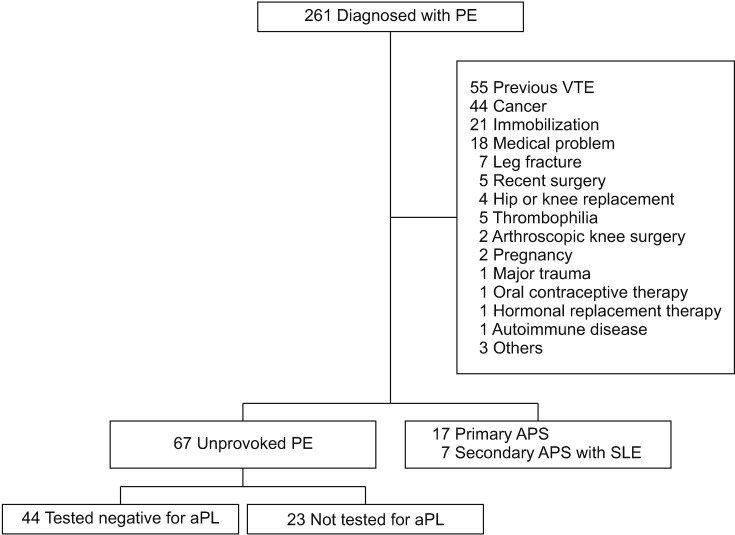
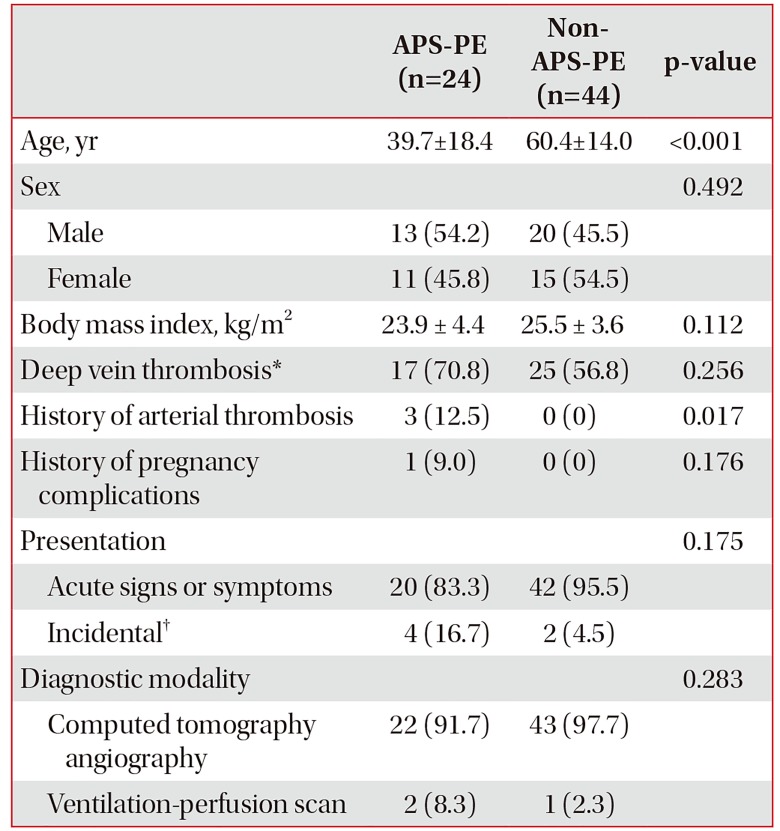
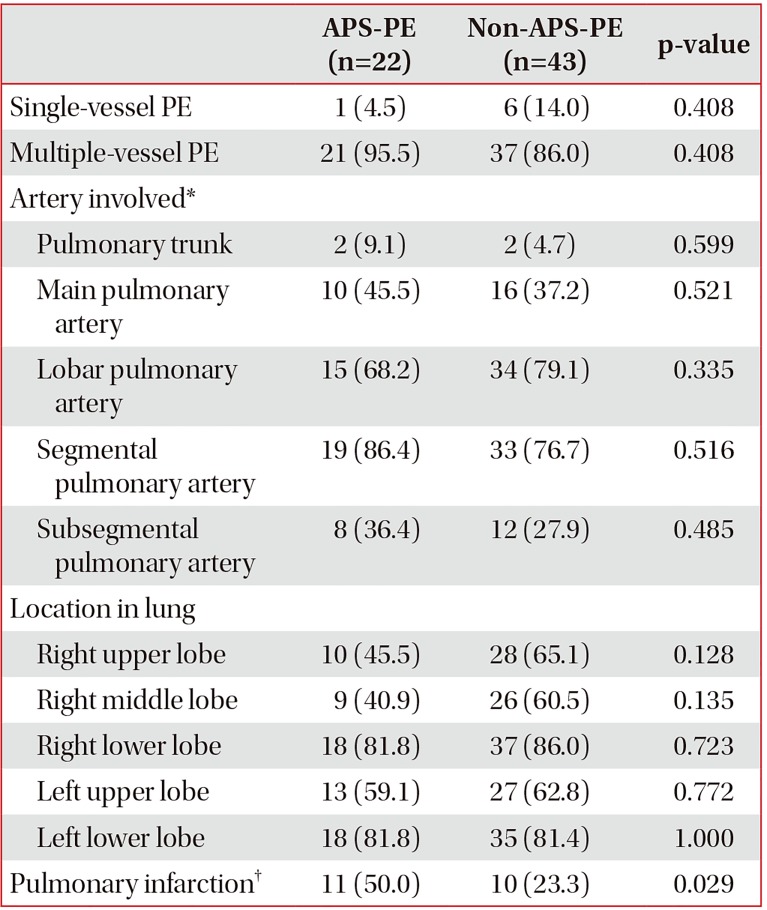
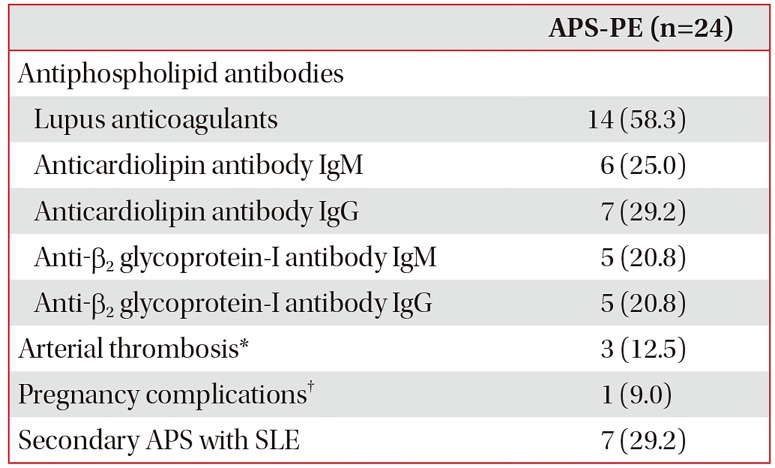
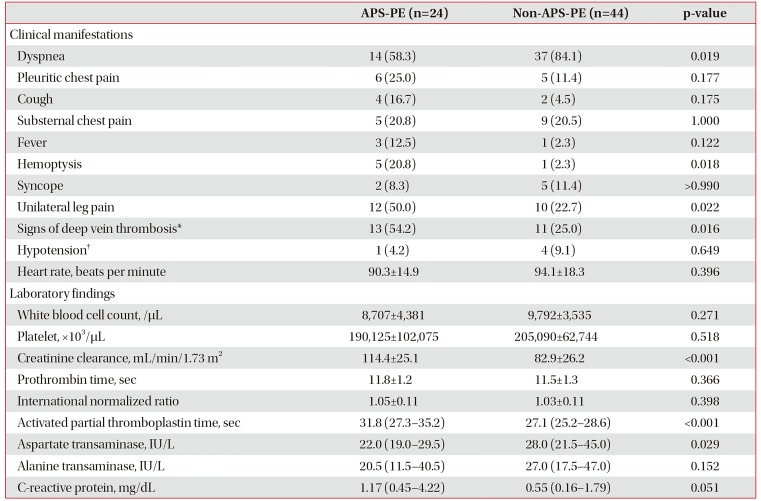
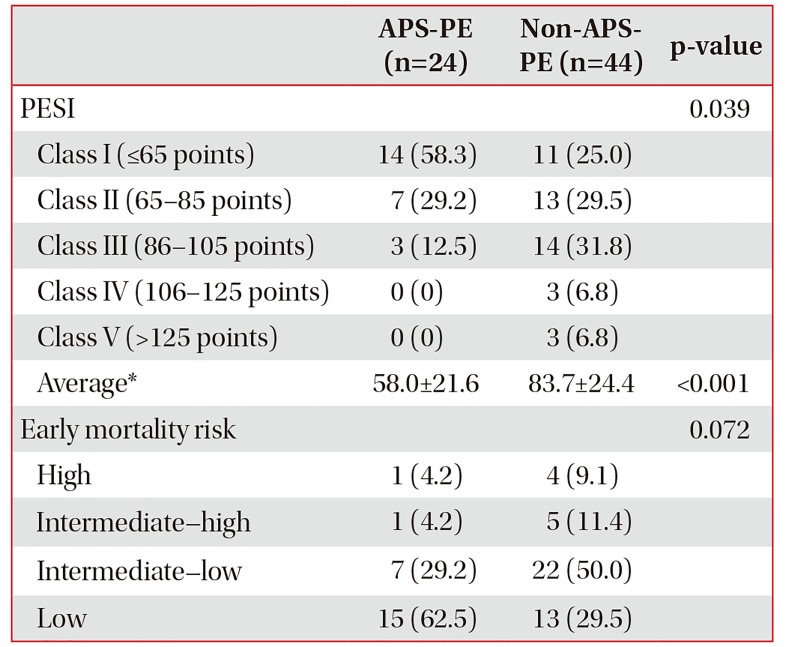
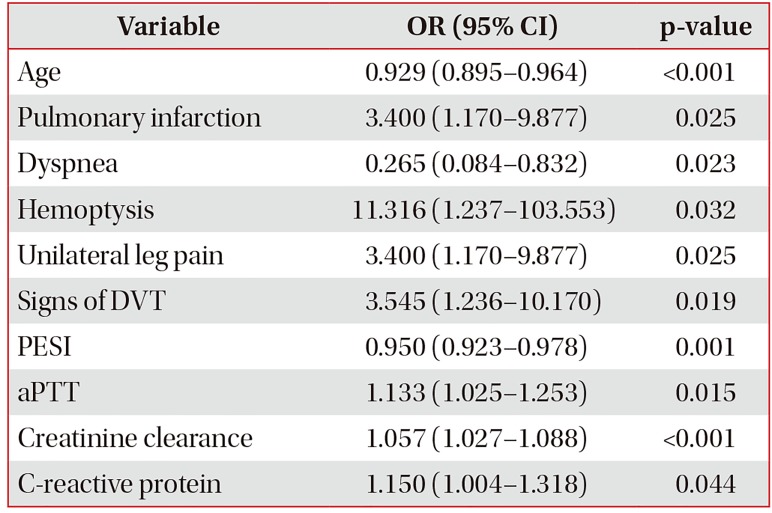





 PDF
PDF ePub
ePub Citation
Citation Print
Print



 XML Download
XML Download